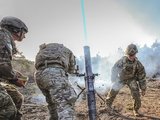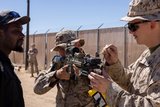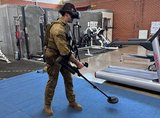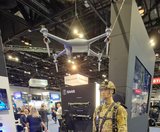Cubic tailors mortar simulator for the US Army
The company’s mortar trainer received improvements based on soldier’s feedback.
Bohemia Interactive Simulations is currently building the VBS simulation functionality that will enable the software to run on the cloud, on ‘any scalability framework’. (Photo: Varjo)
There are certainly core technologies and applications that will continue to shape the military training and simulation business, such as VR head-mounted displays (alongside AR and MR) and high-fidelity, whole-Earth terrain enterprise systems, with the former already being ubiquitous at last year’s trade shows like I/ITSEC and IT2EC.
There are, however, other themes that Bohemia Interactive Simulations' (BISim) CPO Pete Morrison believes will influence military simulation in the next 12 months and beyond.
He shared his thoughts with Shephard in an exclusive interview.
The BISim CCO told Shephard that the company is currently building the VBS Workers that will enable
Already have an account? Log in

The company’s mortar trainer received improvements based on soldier’s feedback.

The company will operate in two new locations in the coming years to better support US services.

This type of tool provides more realistic training easing the incorporation of new scenarios that accurately represent the threats of the battlefield.

The Engineering Corps has been conducting individual instruction using FLAIM Systems’ Sweeper and should start collective deployments in 2025.

The next-generation platform is motion-compatible and can be used in OTW and NVG applications.

The system can be used to prepare soldiers for both drone offensive operations and CUAS missions.